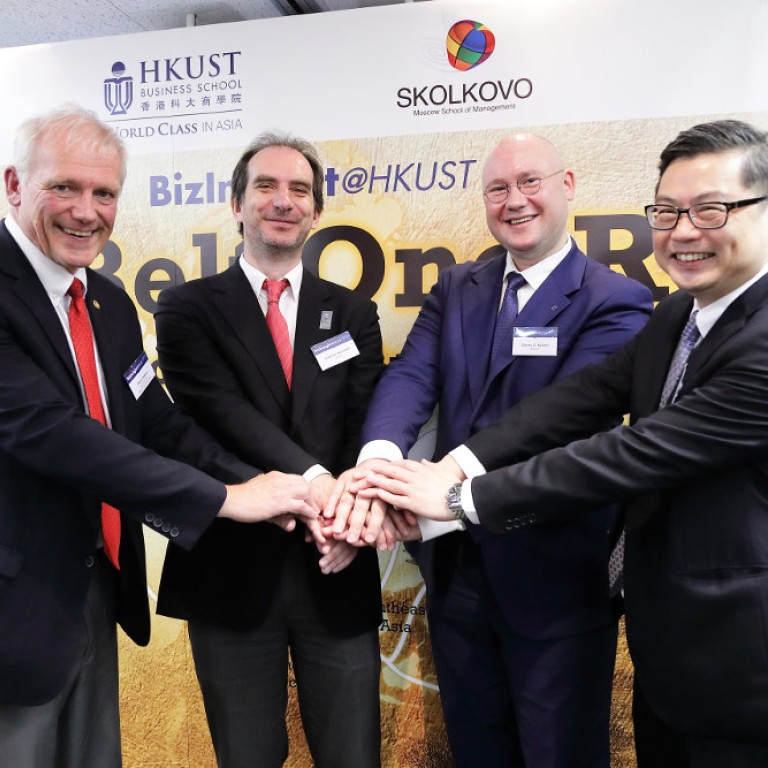
Build institutional base to ease ‘Belt and Road’ issues, urges SKOLKOVO’s head of Emerging Market Studies
Academic links could unite Eurasian heartland and support intra-regional processes, says Moscow School of Management SKOLKOVO’s emerging market director
[Sponsored article]
The impact of China’s ambitious “One Belt, One Road” initiative is set to bring significant change to countries in Central Asia over the next decade, with the promise of new investment, infrastructure and enhanced trade links.
But along with all the positive comment and high-level enthusiasm surrounding the scheme, there is also a clear-eyed realisation that huge challenges lie ahead. In particular, the region’s dynamics and diversity could either facilitate or hinder the progress of projects conceived on a grand scale by “outsiders”. Organisations unfamiliar with, or insensitive to local conditions and considerations could easily find themselves shut out of deals - or running into all kinds of obstacles.
Alexey Kalinin, Director of the Moscow School of Management SKOLKOVO Institute for Emerging Market Studies (IEMS), explained key aspects of the geo-economics of the Eurasian heartland, pointing out that the countries there are far from being “unified” in terms of outlook or priorities.
“You have to remember that these landlocked countries in Central Asia didn’t exist before the collapse of the Soviet Union,” Kalinin said. “Some are still going through internal transitions, which increase uncertainty. So, as part of the ‘One Belt, One Road’ initiative, there is a need to build up the institutional base to help political transitions and to support intra-regional processes to manage security risks, border conflicts and migration.”

Without that, cross-continental infrastructure and other projects reliant on international co-operation and external investment won’t have the secure and stable environment they need to succeed.
The Eurasian Economic Union, Shanghai Cooperation Organisation, and Collective Security Treaty Organisation could all enable steps in the right direction. But even so, no one should think that each country sees the presumed strengths and opportunities of the “One Belt, One Road” initiative in the same way,
“Overall, there is huge excitement in the region about the economic opportunities, but it’s a tricky picture because people who live there may not want to be just a transit point between China and Europe,” Kalinin said. “Therefore, it makes sense to link Belt and Road projects with the UN’s sustainable development goals. We need to create local opportunities that go beyond just business; then these projects will be more successful. When countries have no real history of working together, you’re expecting a lot if you suddenly want them to co-operate on building infrastructure costing billions of US dollars. Targeted education, though, is the way forward. ”
Also, as Russian President Vladimir Putin noted at the Belt and Road summit in Beijing, in May, “Certainly, high quality integration is only possible if we have such a groundwork as good human capital—well qualified personnel, technological and scientific basis. In order to have this groundwork we suggest that we should work together in educational platforms and strengthening the cooperation of the universities and business schools”.
HKUST has made great strides in globalization and in just 25 years. Our experience is valuable to our up-and-coming partners in driving quality and policy measures.
“That’s why we’ve started working with HKUST on executive education programmes for people involved in the Central Asia region,” Kalinin said. “We are sharing expertise to help them take Belt and Road opportunities and acquire the range of knowledge needed to work successfully in this area.”
Indeed, this partnership began last year with the signing of a memorandum of understanding between the Moscow School of Management SKOLKOVO and the HKUST Business School. The intention is to collaborate also through academic exchanges, graduate programs, and ongoing research.
Though only founded in 2006, SKOLKOVO is regarded as one of the leading private business schools in Russia, with a highly ranked MBA programme and ambitions of becoming the top business school in the former Soviet Union and Eastern Europe.
The strategic tie-up with HKUST, bolstered by a further three-year co-operation agreement signed in June, aims to contribute to the economic and social development of Greater China, Russia and the emerging markets covered by the Belt and Road initiative.
“We are looking at joint faculty research and second degree programmes such as a joint EMBA and a DBA, for which some proposals have been generated though not yet finalised,” said Professor Steven DeKrey, Associate Dean at HKUST Business School and Chairman of the SKOLKOVO’s International Academic Council overseeing the partnership. “HKUST has made great strides in globalization and in just 25 years, and our experience is valuable to our up-and-coming partners in driving quality and policy measures.”

At present, there is a particular focus on developing curriculum content to support Belt and Road-themed courses. This will include not just investment analysis and operations, but also topics with an emphasis on cultural topics and geography.
“It’s still early days, but we see a lot of opportunities long term,” DeKrey said. “We’re going to write cases at HKUST about the early Belt and Road successes, and are looking to have a big footprint by embracing multicultural content and taking students from around the region.”
With this in mind, Vladimir Korovkin, Head of Innovations and Digital Research with SKOLKOVO IEMS, highlighted the importance of a strategic approach to migration in order to capitalise on the opportunities for economic growth. For the good of all, countries had to be clear - and fair - in formulating policies relating to immigrants, gastarbeiters (guest workers) and integration.
“Modern migration is a highly competitive global market and it is multidimensional,” Korovkin said. “There is no “one size fits all solution”, but we can see that ‘cherry picking’ of highly skilled and/or wealthy migrants does not work. The recipient countries need to learn to integrate migration en masse to boost the growth in their economies, with focus on issues of mutual understanding and trust”.
